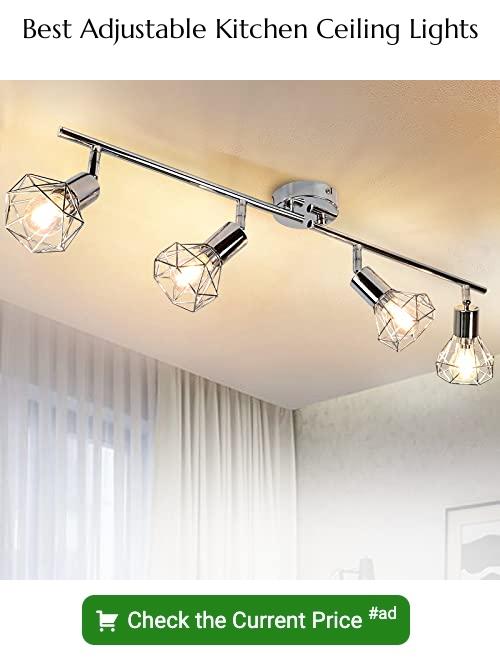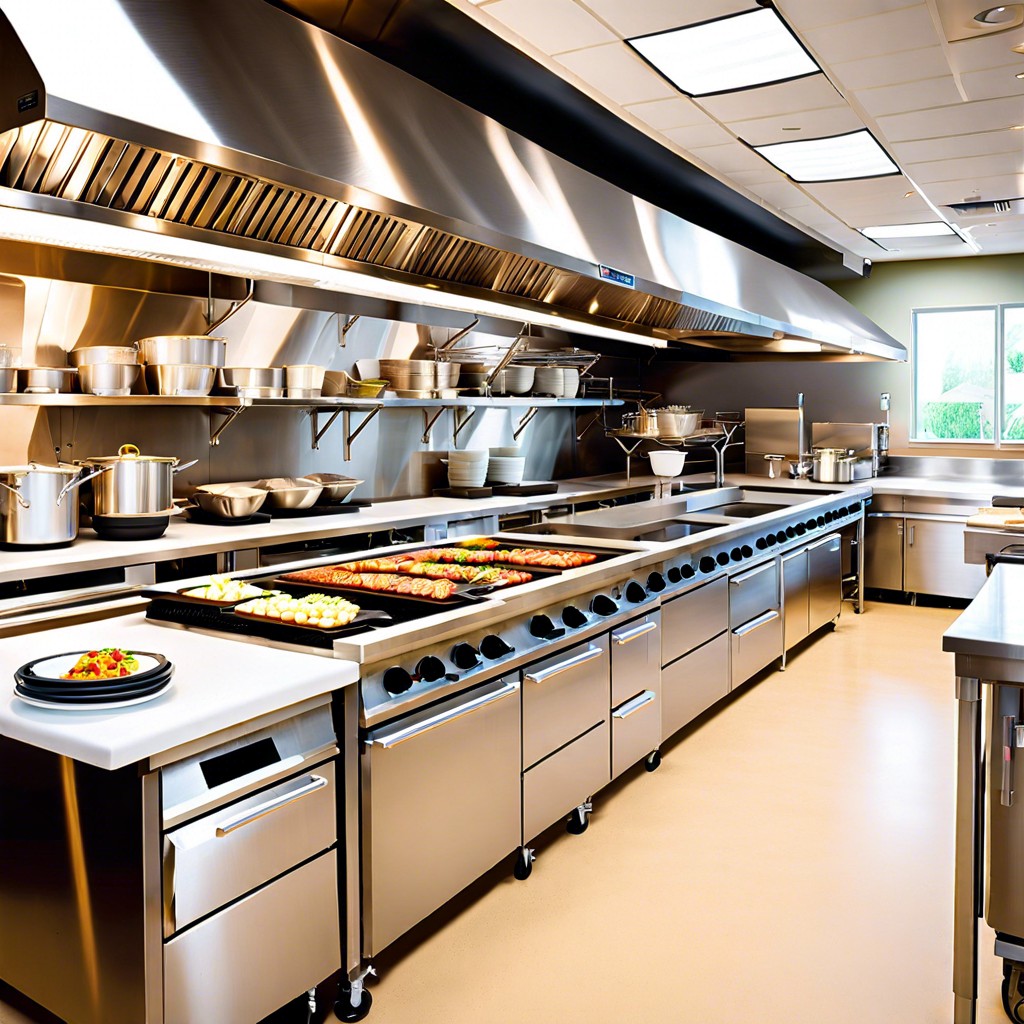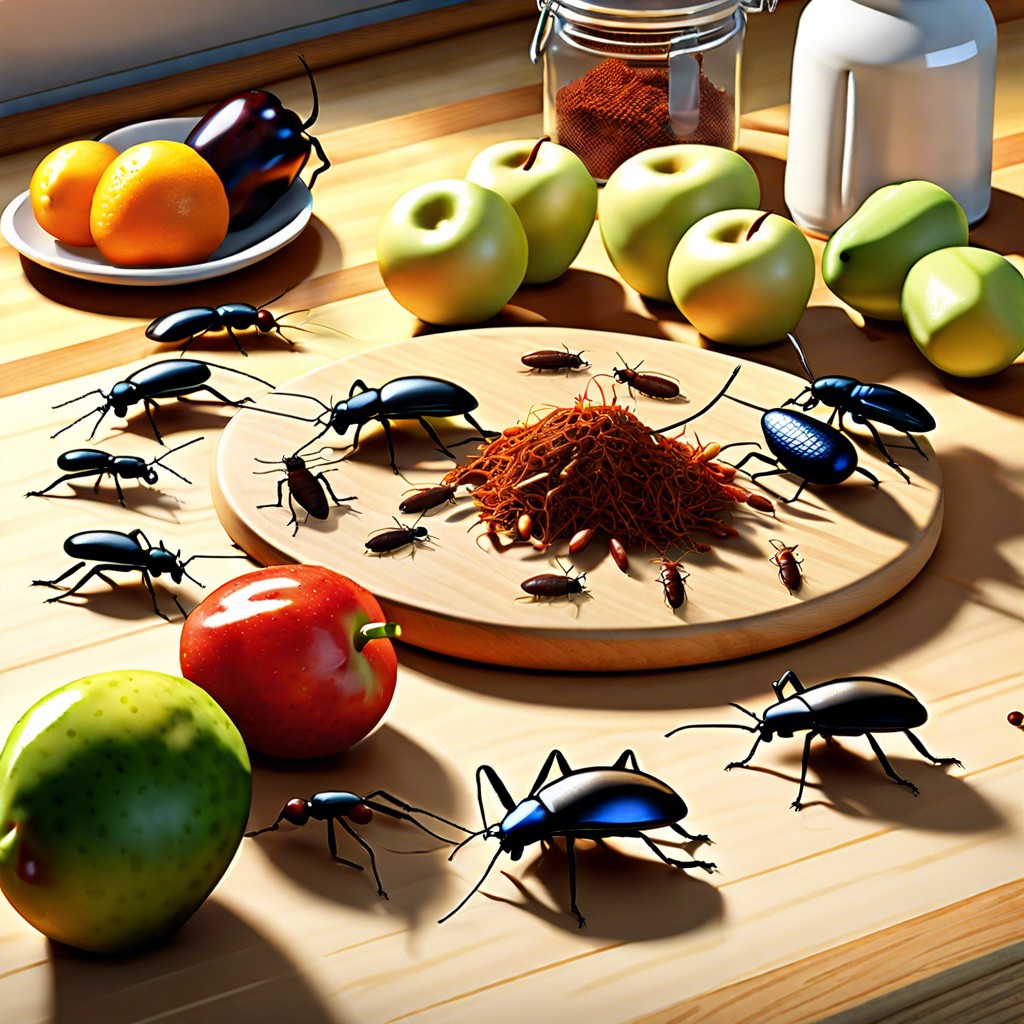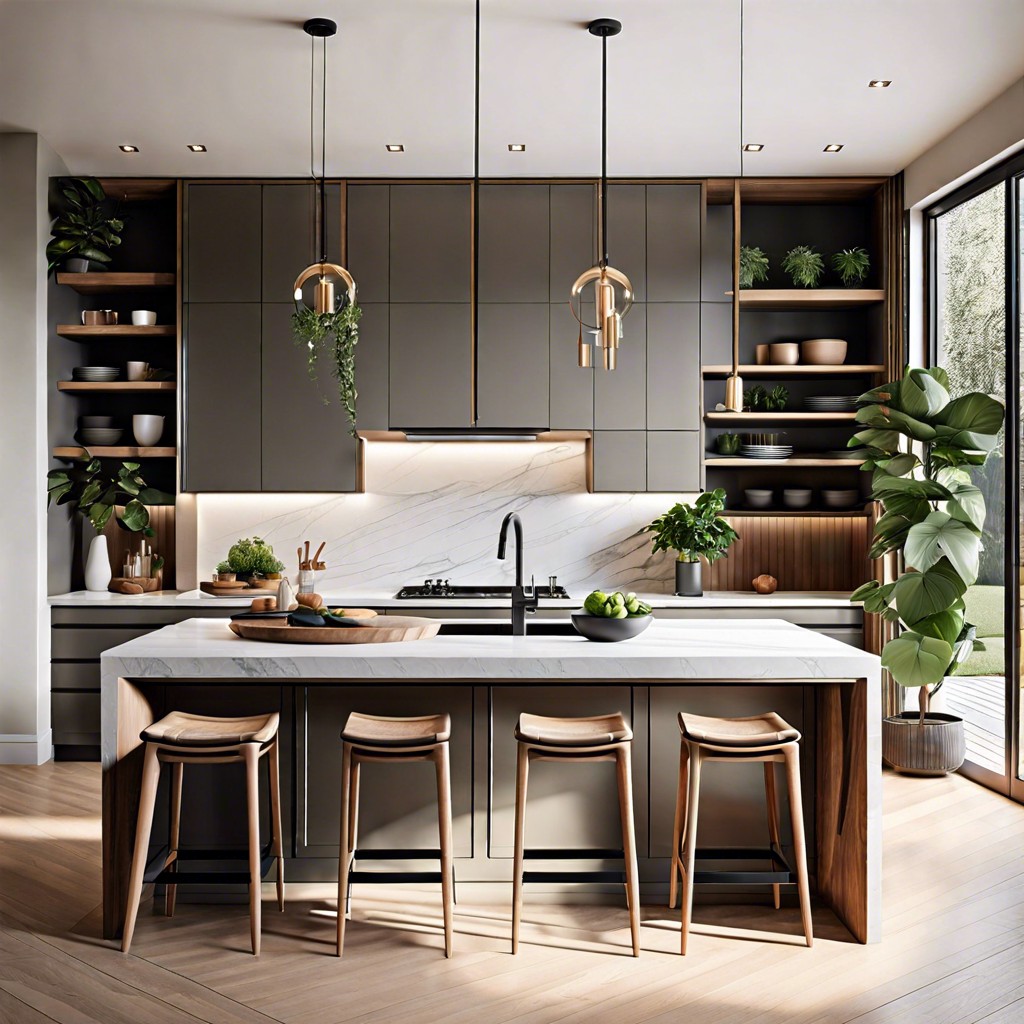Last updated on
Position your ceiling light in the kitchen where the correct type of lighting is needed. Here’s how to figure it out.
As a general rule of thumb, you have to think about the purpose of each lighting fixture in the kitchen before you mount it on the ceiling. This purpose can be threefold: ambient, task, or accent lighting. Your choice and positioning of the specific lighting fixture depend on it.
Use our guide to figure out how to position your kitchen ceiling lights.
Let’s begin!
What's Inside
Base Your Kitchen Lighting Design on Three Layers of Lighting
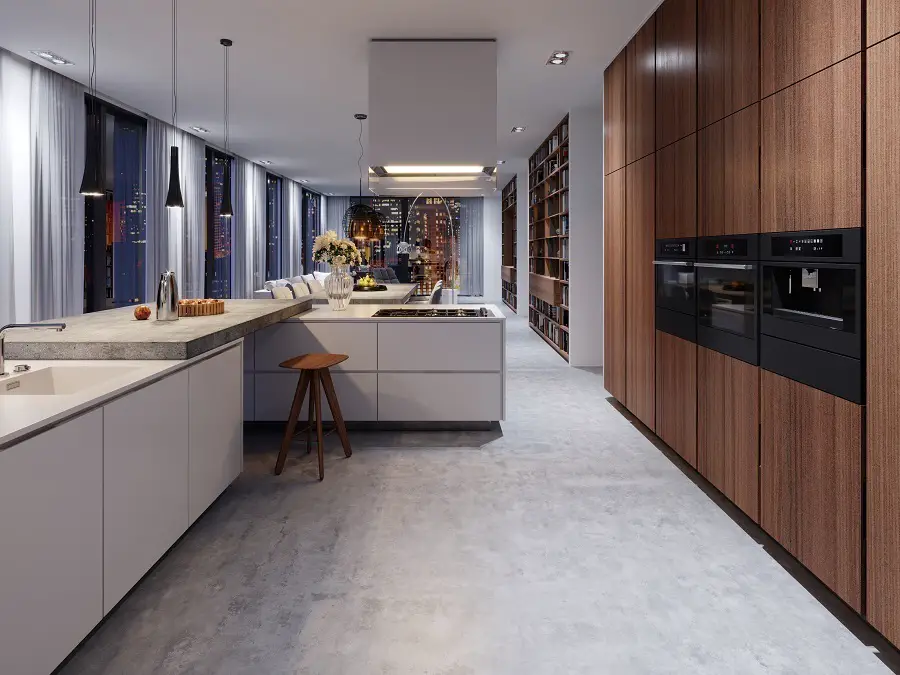
Apply thee layers of light to reduce unflattering shadows and increase the aesthetic appeal of your kitchen lighting design.
First is ambient lighting for general kitchen illumination, which could be a single strong source or a group of smaller lights that provide the same total power.
Second is accent lighting, highlighting points of interest and filling in gaps for even brightness.
Third is task lighting, focusing on smaller areas with a high activity rate to improve safety and prevent eyestrain.
Position Fixtures Based on Function and Type
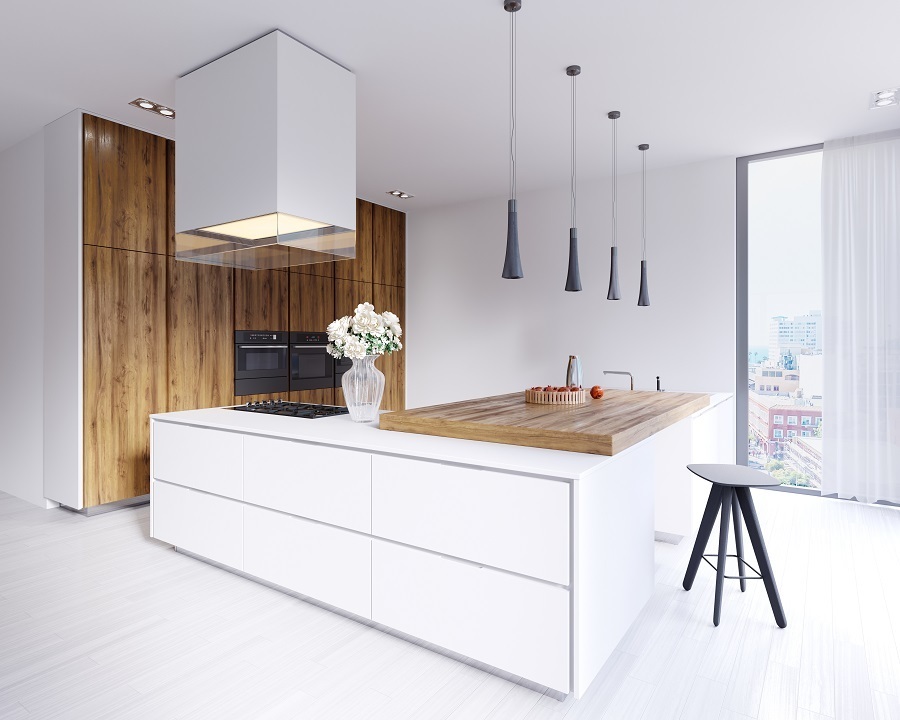
Ensure the correct placement of ceiling lights in a kitchen. Put your lighting fixtures where they need to be based on their function and type.
For example, ambient lights are typically located high up overhead. This puts them in an excellent spot to influence the brightness of the entire kitchen.
On the other hand, accent lights are merely for decoration and should not be overpowering. They look great on the walls beside the artwork.
Positioning lights by fixture type is also important. The placement of can lights is different from the positioning of pendant lights.
Identify the Area That You Need to Light
Assess the lighting needs of your kitchen. Most already have ambient lighting, but they lack accent and task lights. Determine which spots are darker than the rest of the room and try to increase their brightness. Consider adding decorative elements into the kitchen and highlight them with the right fixtures. Put additional lights over the island counters, and other areas where you do food preparation.
Calculate the Number of Recessed Lights Needed
Use several recessed lights instead of single overhead light for more uniform coverage. You need to spread them out across the kitchen, typically near every corner. You can also add more in-between for a long and wide kitchen. If you plan to use low-wattage recessed lights, you will need to install more of them on the ceiling to achieve the necessary brightness. Utilize online calculators for exact figures.
Ceiling Ambient Lighting
Analyze the layout of your kitchen. Think about how you typically move around the space and where you spend the most time. If you are going to install a ceiling ambient light, you need to place it at the spot where you need it most. For square or rectangular kitchens, it would be easy to pick the middle of the room. For irregular layouts, you must focus on the area where you cook meals and wash the dishes.
Task Lighting Should Cast Light Down onto a Work Surface
Task lighting is the final piece of the puzzle. This adds more brightness to the areas where you do the most work. Unlike ambient lights, which are typically close to the ceiling, task lights are located much closer to the work surface. They have a narrow beam that is concentrated on a specific spot. This could be the countertops, the sink, the stove, or the kitchen island.
Accent Lighting Should Highlight the Details or Decor
Survey the kitchen to look for interesting details that you might want to highlight. Use accent lighting to get the job done. These are subtle lighting fixtures that are often situated at eye level. Examples include wall lights and strip lights. Use the former for paintings and pictures. Install the latter underneath overhead cabinets and along the protrusion of kitchen counters.
Use Natural Light Sources
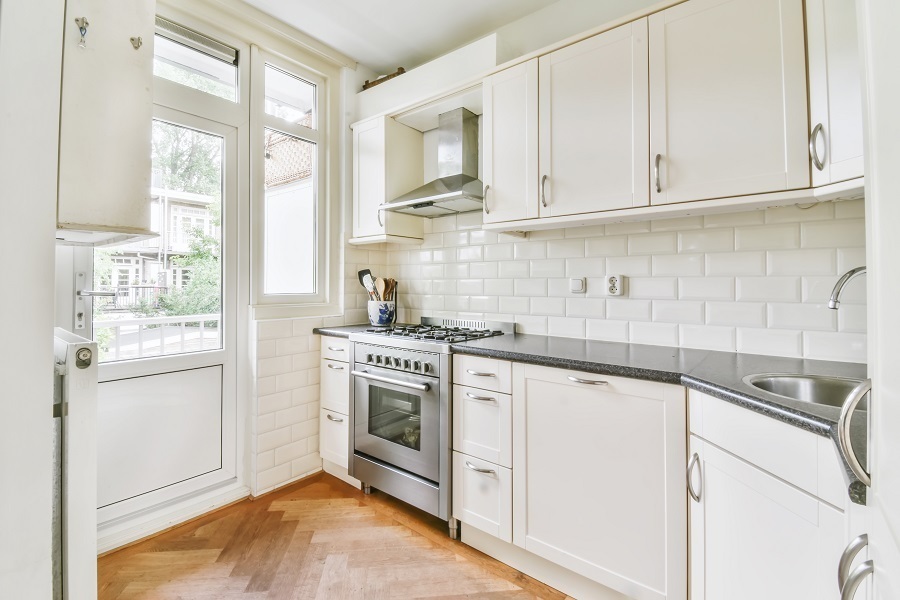
Don’t just focus on artificial lighting. You can save a lot of money by relying on natural light during the day. Take advantage of what you already have, such as your doors and windows. Open them wide while cooking to let the breeze and the light inside. It may be possible to add skylights for the kitchen in some homes. Another way to make the kitchen appear brighter is to paint the walls white and use high-gloss paint.
Ideal Location for Recessed Canned Lights in the Kitchen
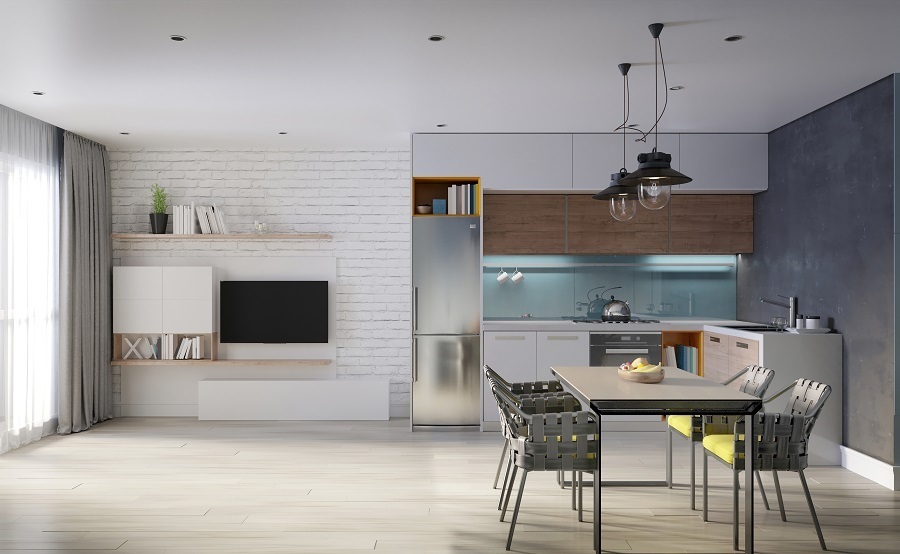
You should install your recessed canned lights about two feet away from the cabinets. These ceiling lights can project light to the counters under the cabinets at this location. Your food preparation will be easier with ample illumination. By incorporating multiple recessed lights, you can soften the shadows and provide uniform brightness.
Testing Fixtures in the Kitchen
You won’t always have easy answers to remodeling questions. If you want to modify the lighting in your kitchen, sometimes you must try different locations and fixtures to figure out what works best. Mix and match various items. Experiment with various configurations before settling on a permanent layout.
Calculate Lighting Placement
Some suggest placing recessed lights 36-48 inches away from the walls so that the cabinets don’t get in the way. However, this can create a harsh shadow when people are working on the counters. Consider placing the lights 24-26 inches from the walls instead, allowing them to shine directly on the counter’s edge — between you and the cabinets. Experts recommend an intensity of 50 foot-candles for food preparation, so get the right lights to achieve this.
The Ceiling Height Rule of Thumb
Divide the ceiling height by two. If the kitchen is 8 feet high, then the recessed lights should have a space of about 4 feet between them. For ceilings that are 10 feet high, the space between fixtures should be 5 feet, and so on. You can modify this to suit the brightness of the decor, the wattage of the lights, and the purpose of the fixtures. Note that lighting a kitchen with a low ceiling might be different.
The Distance Between the Kitchen Ceiling Light Fixtures
The distance between lights should be twice the distance at the ends. For example, if the space from the wall to the nearest light is 2 feet, you should place recessed lights 4 feet from each other. This ensures uniform lighting across the kitchen.
Do You Want to Use a Focal Point?

The focal point in a room will become the center of attention. This could be the center island, the sink, the stove, or any other eye-catching area in the kitchen. You can adjust your lighting to highlight these features further. Increase the illumination where you want people to look. Find stunning lighting fixtures to turn heads.
Avoid Shadows in the Corners
Shadows may appear in corners due to incorrect light placement. When this happens, the ceiling may drop lower, making the kitchen feel cramped. Avoid this by placing recessed lights about 3 feet away from the walls. Pay attention to each corner, as brightness in these areas can make the room feet larger.
FAQ
You can center a recessed light over the kitchen sink if there are no upper cabinets and position the fixture closer to the wall.
You need to consider how much light you want in the kitchen. If you’re cooking up a storm, you’ll need more light than if you’re making some tea. A good rule of thumb is to divide the total ceiling height by two (i.e., if the ceiling is 8 feet tall, put recessed lights 4 feet apart).
If you’re looking for a standard recessed light, they come in several sizes starting at 4” and up. 4” and 5” recessed lights are the most popular.
It depends on the size of the kitchen. As a rule of thumb, look to have one fixture per 4 to 6 square feet of the ceiling.
